Accepted Scientific Name: Uncarina grandidieri (Baill.) Stapf
Nat. Pflanzenfam. [Engler & Prantl] iv. 3b. 261 (1895) (sphalm. didieri). [et also: Ihlenf. & Straka in: Z. Bot. 50(2): 157. 1962 isonym] Engl. & Prantl
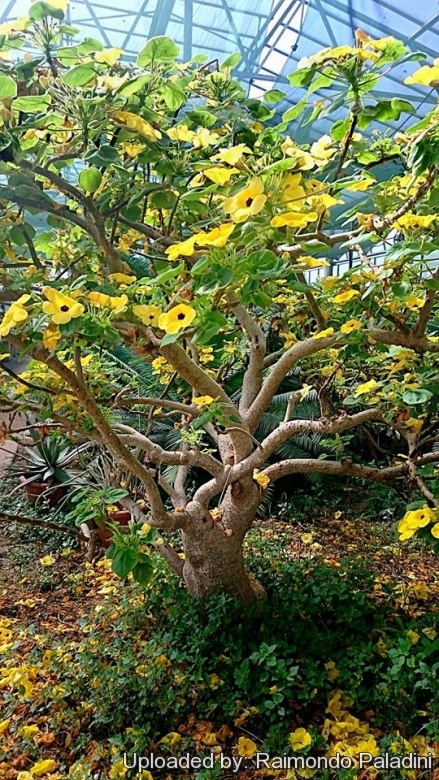
Harpagophytum grandidieri (Uncarina grandidieri) Photo by: Raimondo Paladini
For several weeks in early summer the bare stems of this plant bear a mass of bright yellow flowers.
Origin and Habitat: Uncarina grandidieriSN|15877]]SN|15877]] is native to dry forests of Madagascar. It is dormant during the winter.
Synonyms:
See all synonyms of Uncarina grandidieri
back
Accepted name in llifle Database:Uncarina grandidieri (Baill.) StapfNat. Pflanzenfam. [Engler & Prantl] iv. 3b. 261 (1895) (sphalm. didieri). [et also: Ihlenf. & Straka in: Z. Bot. 50(2): 157. 1962 isonym]Synonymy: 6
back
Common Names include:
ENGLISH: Succulent Sesame, Mouse trap tree, Unicorn tree
Description: Uncarina grandidieriSN|18294]]SN|15877]] is a multibranched shrub or small pachycaulescent tree that may ultimately attain a height of 3-5 meters and 80 cm girth. The flower resembles a large Petunia in form and is bright yellow with a dark throat, as in the "Black Eyed Susan Vine" (Thunbergia alata) and give way to green fruit covered in otherworldly spines. The stems are stout and become thickened with age. The leaves resemble those of the cotton plant (genus Gossypium) and are fuzzy and are sticky to the touch, yielding a musty odour when rubbed. The leaves are deciduous during the winter resting season.
Derivation of specific name: The species is named in honour of Alfred Grandidier (1836-1921), an intrepid explorer and collector in Madagascar.
Stems: The stems are stout and become thickened with age.
Leaves: Long-stalked, three- to five-lobed, more or less sticky-hairy with blades of variable outline, up to 12.5 cm long by 15 cm broad. Those on flowering shoots are smaller than the others.
Flowers: In Clusters on young shoots, the flowers have a calyx of 5 sepals, and a 6 cm long corolla with a narrow tube and an oblique face of 5 wide-spreading, somewhat unequal, about 2.5 cm long, rounded, bright yellow lobes (petals). The throat of the flower is stained with purplish-red. These are four fertile stamens, one rudimentary staminode (sterile stamen), and one style.
Fruits (capsules): Flat, pointed (hence the common name, unicorn tree) that are covered with small inwardly pointed spines mounted on 18 mm pedicels. Each spine has a tiny hook an the end; as the fruit dries, the remaining seed pod becomes a real hazard.
Remarks: Uncarina grandidieriSN|15877]]SN|15877]] is similar to Uncarina decaryiSN|15877]]SN|18294]], but with larger flowers and not deeply lobed leaves.
Bibliography: Major references and further lectures
1) San Marcos Growers contributors Uncarina grandidieri - Succulent Sesame San Marcos Growers <http://www.smgrowers.com/products/plants/plantdisplay.asp?plant_id=2479>. Web. 10 June 2016.
2) Thomas H. Everett “The New York Botanical Garden Illustrated Encyclopedia of Horticulture”, Volume 10 Taylor & Francis, 1982
3) Amy Stewart “Wicked Plants: The Weed That Killed Lincoln's Mother and Other Botanical Atrocities” Algonquin Books, 21 May 2009
4) Debra Lee Baldwin “Succulent Container Gardens: Design Eye-Catching Displays with 350 Easy-Care Plants” Timber Press, 20 January 2010
5) Royal Botanic Gardens, Kew, F. N. Hepper “Kew, gardens for science & pleasure” H.M.S.O., 1982
6) Urs Eggli, Leonard E. Newton “Etymological Dictionary of Succulent Plant Names” Springer Science & Business Media, 29 June 2013
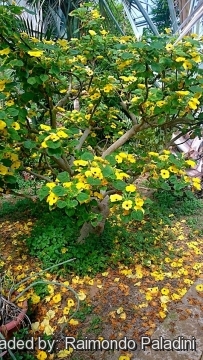 Harpagophytum grandidieri (Uncarina grandidieri) Photo by: Raimondo Paladini
Harpagophytum grandidieri (Uncarina grandidieri) Photo by: Raimondo Paladini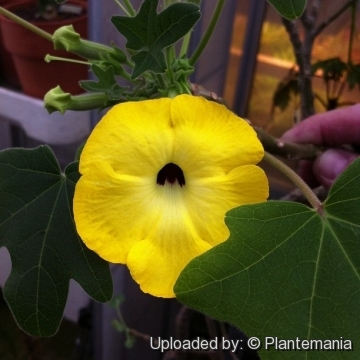 Harpagophytum grandidieri (Uncarina grandidieri) Photo by: © Plantemania
Harpagophytum grandidieri (Uncarina grandidieri) Photo by: © Plantemania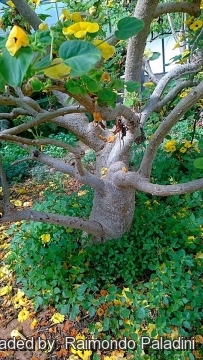 The deciduous leaves are pubescent and feel slightly sticky, producing an unpleasant odour when rubbed. (Uncarina grandidieri) Photo by: Raimondo Paladini
The deciduous leaves are pubescent and feel slightly sticky, producing an unpleasant odour when rubbed. (Uncarina grandidieri) Photo by: Raimondo Paladini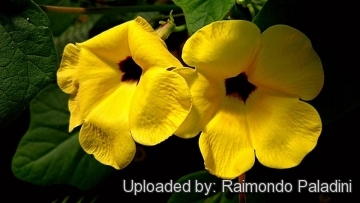 Harpagophytum grandidieri (Uncarina grandidieri) Photo by: Raimondo Paladini
Harpagophytum grandidieri (Uncarina grandidieri) Photo by: Raimondo Paladini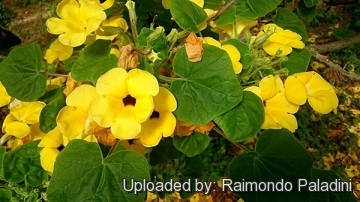 The bright yellow flowers with dark throats are pollinated by beetles and have sticky pollen suited to this task. (Uncarina grandidieri) Photo by: Raimondo Paladini
The bright yellow flowers with dark throats are pollinated by beetles and have sticky pollen suited to this task. (Uncarina grandidieri) Photo by: Raimondo Paladini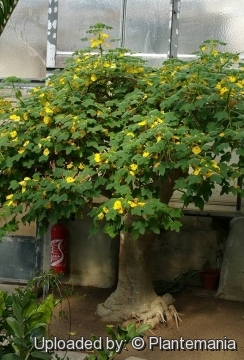 Growing habitat at le jardin exotique de Monaco. (Uncarina grandidieri) Photo by: © Plantemania
Growing habitat at le jardin exotique de Monaco. (Uncarina grandidieri) Photo by: © Plantemania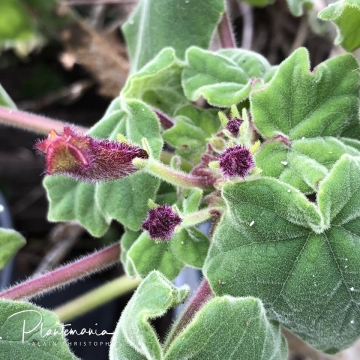 Harpagophytum grandidieri (Uncarina grandidieri) Photo by: © Plantemania
Harpagophytum grandidieri (Uncarina grandidieri) Photo by: © PlantemaniaSend a photo of this plant.The gallery now contains thousands of pictures, however it is possible to do even more. We are, of course, seeking photos of species not yet shown in the gallery but not only that, we are also looking for better pictures than those already present.
Read More... Cultivation and Propagation: Uncarinias are easy to cultivate and heat resistant plant, which grow better than the average. Their attractiveness is further enhanced because they will flourish very easily in any pseudo-tropical environment. They can tolerate neglect, and as soon as you pay them a little attention (like repotting or fertilizing) they recover and put out plentiful new growth. They will tolerate intense heat and sun, when provided with adequate water, but must be protected from frost. Uncarinas make beautiful bonsai, and their roots can be elevated.
Growth rate: These plants can grow quite quickly if provided with adequate water, warmth and root run.
Soil: It needs a rich, very well drained potting medium (add pumice, vulcanite, and perlite.
Waterings: It should be watered plentifully in Summer and kept drier in Winter. This species like all Uncarinias, is sensitive to excess moisture, and should be kept on the dry side. It rot easily and do not like any water when it has no leaves.
Fertilization: Use diluted fertilizer on young plants to speed up growth.
Exposure: They do best when grown in part shade to full sun. G
Hardiness: Due to their Madagascan origin keep warm in winter, the minimum safe average temperature is 10°C, although they can go lower for short periods (cannot endure temperatures below 2° C). If grown outdoors they will probably grow back from roots, if frozen. They are quite heat tolerant, and survive easily temps above 45° in summer, without dropping leaves.
Bonsai/caudex culture: Lifting the thickened root system periodically creates a cool, gnarled bonsai look.
Warning: The seed pods are covered with barbed hooks. Don't touch this fruit unless you want to spend some time trying to remove it from your fingers. Remove the pods when they are still green and pliable (if they are dry, use long-handled clippers or hemostats) and dispose of carefully.
Reproduction: Seeds, and they can be reproduced by cuttings as well.


















